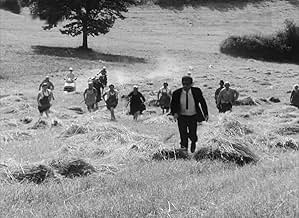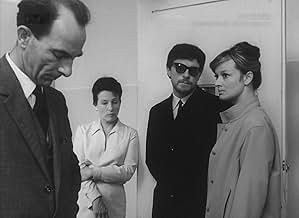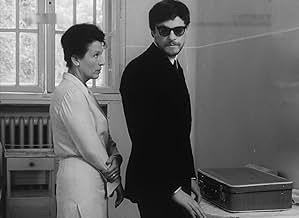Sitting in a whirlpool containing the works of Carl Theodore Dreyer, Robert Bresson and John Cassavettes is this work of the Czech New Wave, "Return of the Prodigal Son".
The film begins with dialogue between a man (whose name we eventually learn is Jan) and his therapist discussing a recent suicide attempt that Jan doesn't know the cause of. During the early part of this exchange, we don't see either of the speaking characters, but instead the camera shows us a montage of shots in their outermost surroundings. Although these characters are alive, this sequence almost gives the impression of witnessing a conversation between ghosts, an effective foreshadowing for our lead's hollow existence. Although Jan is a successful engineer with a wife and child, he can't seem to function or find much satisfaction in the world around him. This lack of satisfaction is the closest thing we get to a real answer, but ultimately it feels that we've barely scratched the surface of the anxiety plaguing him.
Low key would be the best phrase to describe the performances and overall mood. There is scarcely any music except for a few scenes. The performances are almost completely drained of any theatricality, with only the occasional spurts of passion. Jan especially seems to keep the same mono tone throughout the movie, and his eyes almost always hidden behind sun glasses. Like other masters who have used this technique, the effect is utterly absorbing and sits in the mind long after viewing has completed. and make no mistake, low key does not mean wooden. Jan's performance is excellent. Not to discredit everyone else in the picture, but this rests mostly on the shoulders of Jan, and he sublimely conveys a range of emotions. Yes, we do see moments of happiness and passion as well as the angst. Nothing ever feels forced or over the top.
However, the film is also methodically paced, which in combination with the performance, will require the viewer to be prepared to focus. I don't consider this a flaw, but anyone wanting to watch this should be prepared for that.
I haven't gone into the story too much. Besides the tidbits I posted up above, there really isn't any overarching story. Events and sub plots occur that may or may not be wrapped up. This is not a film to watch with expectations of spelled out ideas of tightly knit conclusions. Instead the various threads more so paint a picture of a man amid a break down he has no grasp on, not too different from the narrative structure of a french new wave picture.
If you can find this film (and as of this review, it can be found via Hulu streaming) and are a fan of art house films and especially those akin to the film makers mentioned earlier, it is absolutely worth a watch.





























